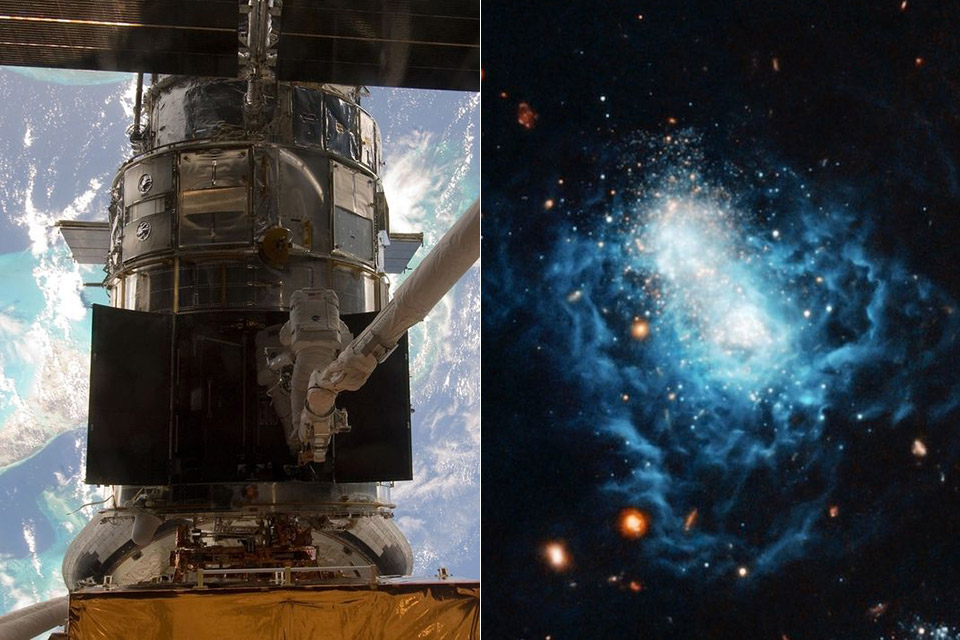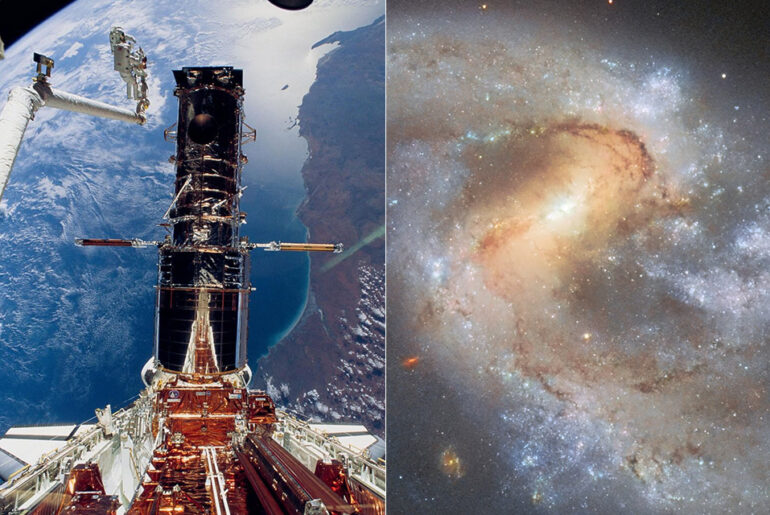
NASA celebrates the 34th anniversary of the Hubble Space Telescope wit this stunning image of the Dumbbell Nebula, also known as M76, located 3,400 light-years away in the northern circumpolar constellation Perseus.

NASA / ESA’s Hubble Space Telescope observes spiral galaxy ESO 422-41 with its brightly shining core, located 34 million light-years away in the constellation Columba. Hubble’s Advanced Camera for Surveys was used to study the galaxy’s spiral arms and the glow from its dense core.

NASA / ESA’s Hubble Space Telescope captured a peculiar image of galaxy NGC 2146 located approximately 70 million light-years from Earth in the constellation Camelopardalis. What makes it so peculiar? It has one spiral arm that appears to be looped in front of the galaxy’s bright core.

NASA / ESA’s Hubble Space Telescope captured this dazzling image of bright barred spiral galaxy NGC 3783 located 130 million light-years from Earth in the constellation Centaurus. We see it face-on, with its bright center crossed by a glowing bar and surrounded by tightly-wound spiral arms that form a circular shape with relatively clear edges.

NASA / ESA’s Hubble Space Telescope captured a surreal image of dwarf irregular Galaxy I Zwicky 18, located 59 million light-years away in the constellation Ursa Major. This image was captured using Hubble’s near-infrared and visible-light instruments, revealing faint, older stars that suggest the galaxy’s star formation could have started as far back as 10 billion years ago .

NASA / ESA’s Hubble Space Telescope observes tilted spiral galaxy IC 4633, located 100 million light-years from Earth in the constellation Apus. This galaxy is known for its heavy star-forming activity, as well as hosting an active galactic nucleus at its core.

While not as intriguing as a galactic question mark, this peculiar Bok globule is just as mysterious. Captured by NASA / ESA’s Hubble Space Telescope, the Bok globule you see here is basically opaque, dark knots of gas and dust that are absorbing light in the center of the nearby emission nebula NGC 281.

NASA’s James Webb Space Telescope captured a stunning image of extreme starburst galaxy Messier 82 (M82), which is located 12 million light-years away in the constellation Ursa Major. At first glance, this galaxy is somewhat compact in size, yet it hosts a frenzy of star formation activity.

NASA / ESA’s Hubble Space Telescope captures Arp 72, a peculiar galaxy group that only includes two interactive galaxies: NGC 5996 (the large spiral galaxy) and NGC 5994 (its smaller companion in the lower left).











